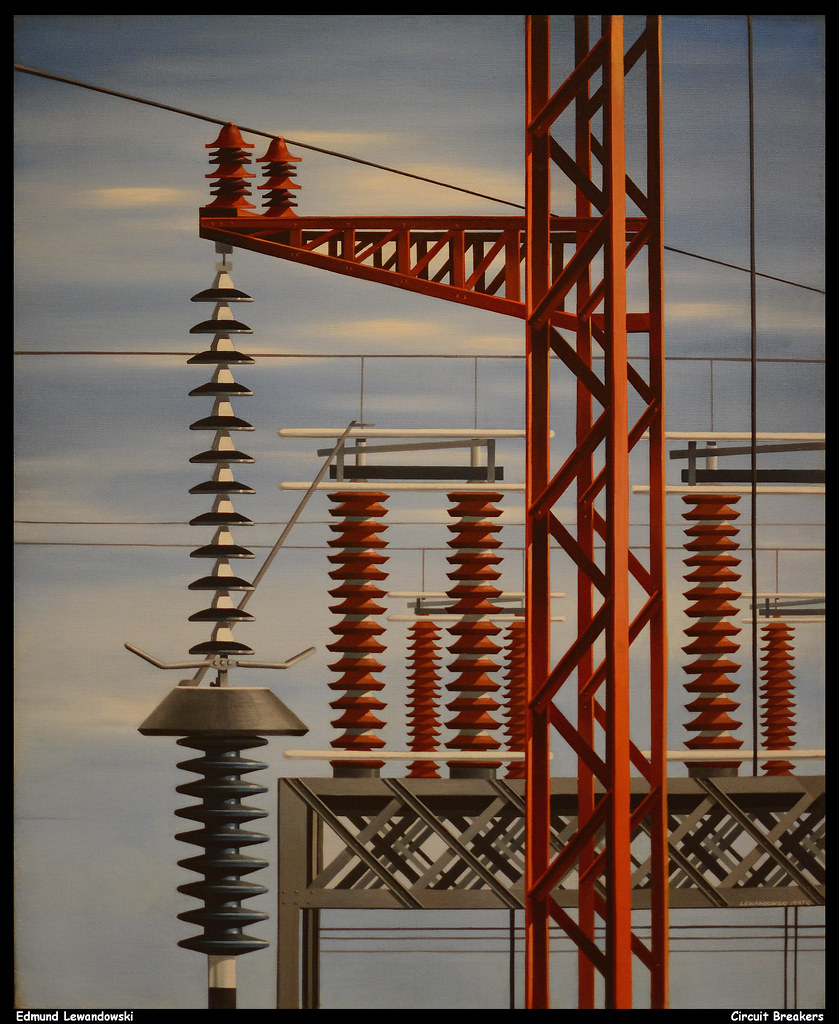#Edmund Lewandowski
Text
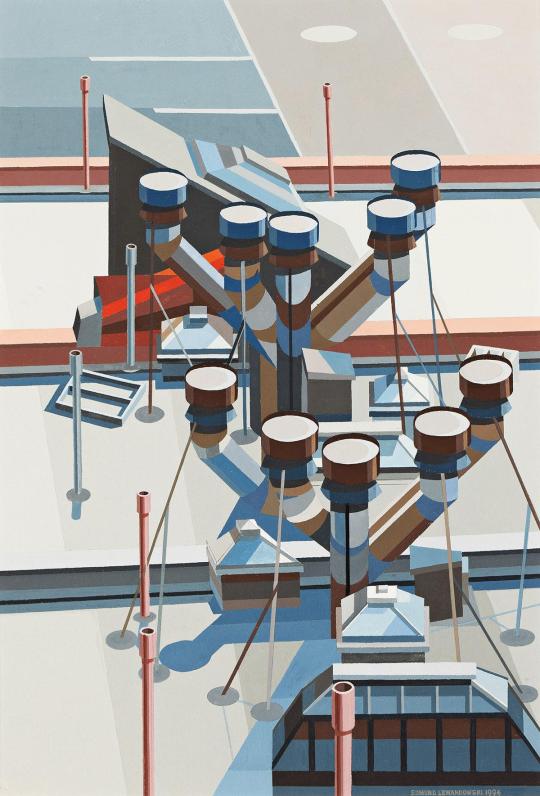
Edmund Lewandowski (American, 1914-1998), Rooftops, 1994. Gouache on cream wove paper, 28 1/2 x 21 in.
142 notes
·
View notes
Text

Edmund Lewandowski - Studio Rooftop, 1940
8 notes
·
View notes
Photo

Blast Furnace #7. 1949. Edmund Lewandowski (American, 1914–1998). Milwaukee Museum of Art.
90 notes
·
View notes
Text

EDMUND LEWANDOWSKI
Rooftops.
Gouache on cream wove paper, 1994
Swann Galleries
21 notes
·
View notes
Photo
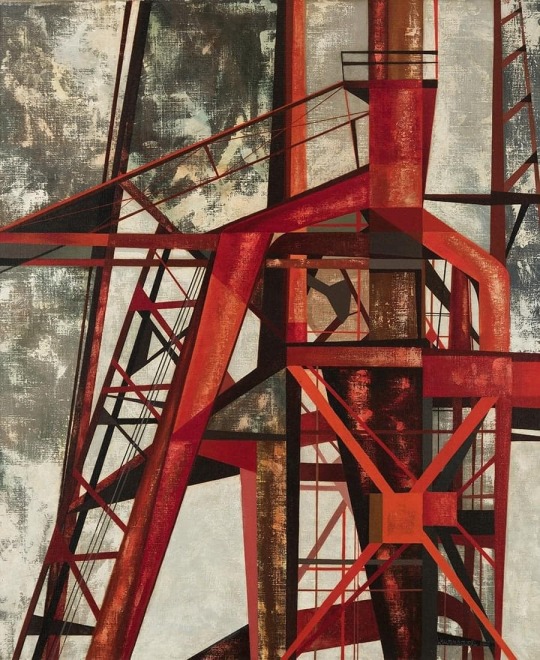
Edmund Lewandowski (American,1914–1998)
Blast Furnace 5, 1949
16 notes
·
View notes
Text

Circuit Breakers - Edmund Lewandowski, 1947
4 notes
·
View notes
Photo

Edmund Lewandowski
#Edmund Lewandowski#art#graphic#painting#architecture#architectural#contemporary#contemporary art#1956
1 note
·
View note
Photo




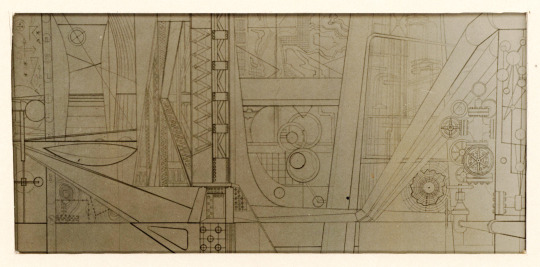
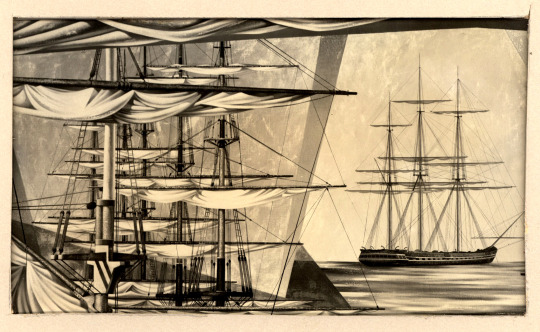

World Art Day
First held in 2012 by the International Association of Art (IAA/AIAP), and later proclaimed in 2019 at UNESCO’s General Conference, World Art Day promotes the development, diffusion, and enjoyment of art around the world. This year, we’re highlighting the Edmund D. Lewandowski Papers (UWM Mss 229) from the UWM Archives. Lewandowski was a prolific painter and mosaicist as well as President of the Layton School of Art.
The Lewandowski collection contains several black and white photographs of his paintings and mosaics, featured above. It also holds a scrapbook, created by Lewandowski, covering nearly his entire career from the early 1930s well into the 1980s. Lewandowski was considered a second generation Precionist, focusing on simple shapes, geometrical structures, and minimal details, originally developed in the inter-war period. More on this style can be found in the Metropolitan Museum of Art’s Heilbrunn Timeline of Art History essay series. Lewandowski was a student at the Layton School of Art in the 1930s and eventually became its president from 1954 to 1972 after joining the Works Progress Administration’s Federal Art Project and working as an artist-correspondent with the US military in France during World War II.
The first image shows one of Lewandowski’s most familiar works to Milwaukee locals – the mosaic on the west side of the Milwaukee War Memorial, from 1959. The Roman numerals reference the start and end years of World War II and the Korean War. More on this mural can be found on the blog of the Milwaukee Art Museum. Below that, are two photographs of works for the Allen-Bradley Company. On the left was part of a series on Great American Inventions from the 1960s and the right is a detail of a mosaic made for the company in 1958. Following those is a photograph of Lewandowski working on an unnamed mosaic in 1953, though it appears to be the mosaic now displayed in Marquette University’s Alumni Memorial Union. Below that is an undated preliminary drawing for the Northwestern Institute of Technology. And finally, the last two images are photographs of S. S. Constitution, American Export Line from 1950 on the left and Nativity from 1957 on the right.
Check out the IAA USA’s website for more information on World Art Day and how they’re celebrating virtually this year. See more of Lewandowski’s work online from the Milwaukee Art Museum and more from his papers here at the UWM Archives.
#uwm archives#world art day#Edmund D. Lewandowski#mosaics#painting#photography#milwaukee history#milwaukee art#milwaukee war memorial#art#black and white photography#Milwaukee art Museum#Layton School of Art#vintage photography#1950s#1960s#Allen-Bradley Company#Inventions#art photography#Samantha#Milwaukee Artist
30 notes
·
View notes
Photo

Edmund Lewandowski (1914-1998) ''Blast Furnace'' 1949 - source Heritage Auctions.
20 notes
·
View notes
Photo



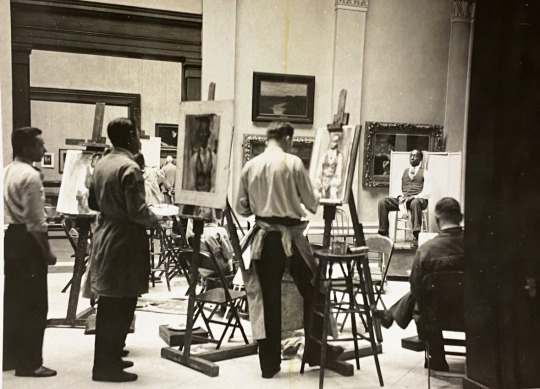



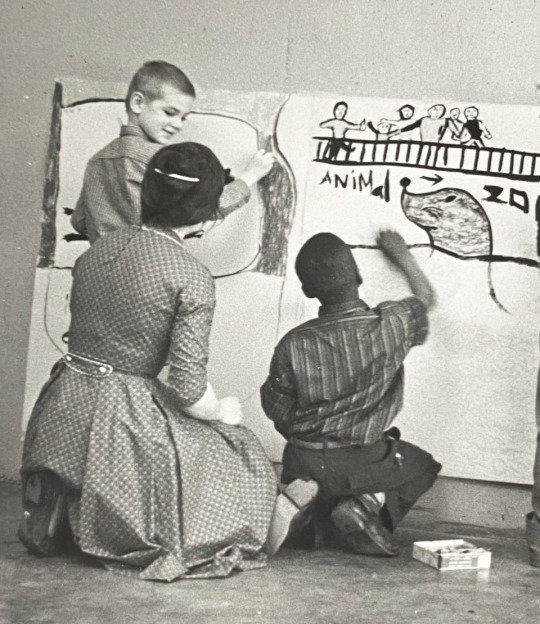

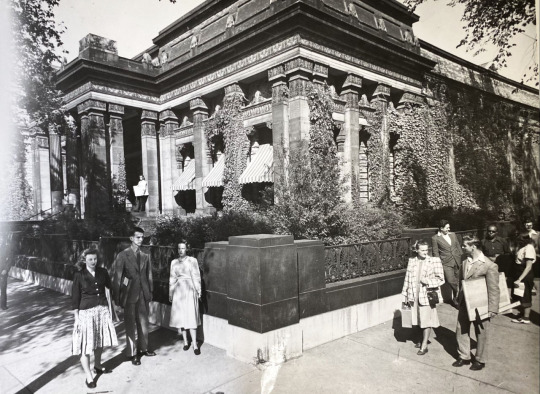
Milwaukee Monday: Layton School of Art
It is back-to-school time! To celebrate, this Milwaukee Monday we are featuring photographs of classes held at Layton School of Art. These photographs are from two manuscript collections held by our sibling department the UWM Archives: Charlotte Russell Partridge and Miriam Frink papers, 1862-1980 (Milwaukee Mss 167) and Layton School of Art and Design records, 1888-1980 (Milwaukee Mss 168).
Layton School of Art was a college founded in Milwaukee’s Layton Art Gallery in 1920 by Charlotte Russell Partridge and Miriam Frink, two women who believed Progressive Era ideas about psychology and creativity could train artists for industry as well as foster civic responsibility. Their personal and public partnership produced one of the most innovative art programs in the United States.
Layton School of Art was coeducational and open to all students no matter their gender or race. In an interview Charlotte Partridge remarked “I haven't any use for segregation of any kind” (Oral history interview with Charlotte Russell Partridge, circa 1965, Archives of American Art, Smithsonian Institution, Interviewer, Harlan Phillips, June 12, 1965).
The holistic program at Layton started with a foundational year in which students would learn principles of design, while also taking courses in psychology and literature appreciation. In the second year, students would specialize in a specific area of art such as industrial design, costume design, commercial art, illustration, interior decoration, “normal” art, and painting. Later, the program was expanded to a 3-year and 4-year program with additional types of courses. Layton offered day classes for more traditional college students and evening classes for working people who wanted to expand their professional repertoire or just take a class for recreation. On Saturdays, Layton hosted free children’s classes in collaboration with the Milwaukee Art Institute. These classes served a dual purpose of providing art education to children and training Layton students in the “normal art” program to become teachers.
During Charlotte and Miriam’s tenure as directors of Layton they responded adeptly to many challenges influenced by large societal events such as the World War I, the Great Depression, and World War II. While the Layton School of Art was advertised as a professional school that trained artists for industry, there was a more idealistic goal of training better citizens in service of society. By all accounts, Layton School of Art was a huge success under the leadership of Charlotte Partridge and Miriam Frink. It came as a complete shock when the Layton Board of Trustees asked for their resignation at a board meeting on February 5, 1954. The trustees reasoning was that the women were too old to continue directing the school, and they had already decided on a successor, Edmund D. Lewandowski, a former Layton student. Ultimately, the Layton School of Art operated under new leadership until it closed in 1974 due to financial insolvency.
The Layton School of Art has a direct tie to the establishment of the Milwaukee School of Art & Design (MIAD), which still utilizes many of Layton’s teaching methods today.
The UWM Archives holds the two major manuscript collections related the history of the Layton School of Art. These materials have so much research potential and we wanted to highlight some photographs that really capture the spirit of what it was like to be a student at the Layton School of Art.
View more Milwaukee Monday posts.
View more posts about the Layton School of Art.
–Sarah, Special Collections Senior Graduate Intern
#Milwaukee Monday#Layton School of Art#Charlotte Russell Partridge#Miriam Frink#art#colleges#Layton Art Gallery#MIAD#Milwaukee School of Art & Design#photographs#Milwaukee#Milwaukee history#Progressive Era#art classes#design#back to school#manuscript collections#UWM Archives#Charlotte Russell Partridge and Miriam Frink papers#Layton School of Art and Design records#Sarah Finn#sarah
100 notes
·
View notes
Text

Edmund Lewandowski (American, 1914-1998), LIfe Boat Station, No.3, 1988. Gouache and watercolor on paper, 24⅞ × 17 in.
115 notes
·
View notes
Text
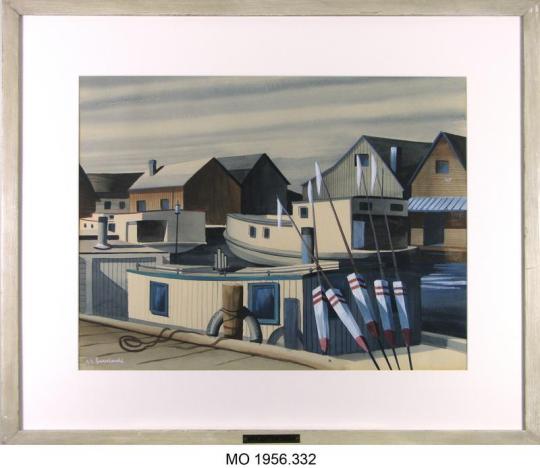
"Fishermen's Village" by Edmund D. Lewandowski for the Wisconsin Art Project, Federal Art Project, Works Progress Administration (WPA). Learn more on our Digital Artifact Collection: https://fdr.artifacts.archives.gov/objects/7296
#world watercolor month#wpa#new deal#wisconsin#1930s#fishing#museum from home#museum collection#art of tumblr
22 notes
·
View notes
Photo

Blast Furnace #7. 1949. Edmund Lewandowski (American, 1914–1998). Milwaukee Museum of Art.
14 notes
·
View notes
Text

Edmund Lewandowski (1914-1998)
Industrial Plant
signed 'E.D. Lewandoski' (lower right)
watercolor and pencil on paperboard
Christie’s
34 notes
·
View notes
Video
Edmund Lewandowski - Circuit Breakers JPB by jpbrewer1963
Via Flickr:
1947 Oil on canvas Minneapolis Institute of Art Myron Kunin Collection of American Art
2 notes
·
View notes
Text
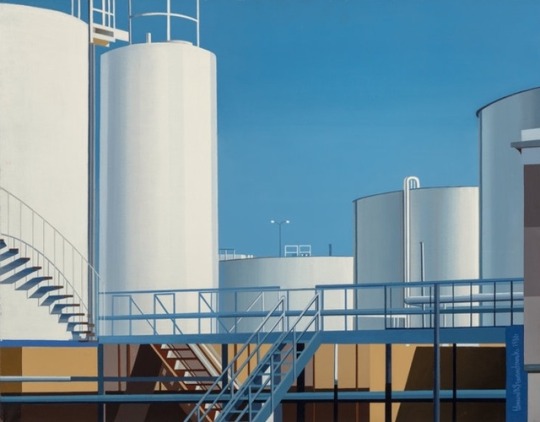
Petrol Terminal #2 - Edmund Lewandowski, 1986
1 note
·
View note
